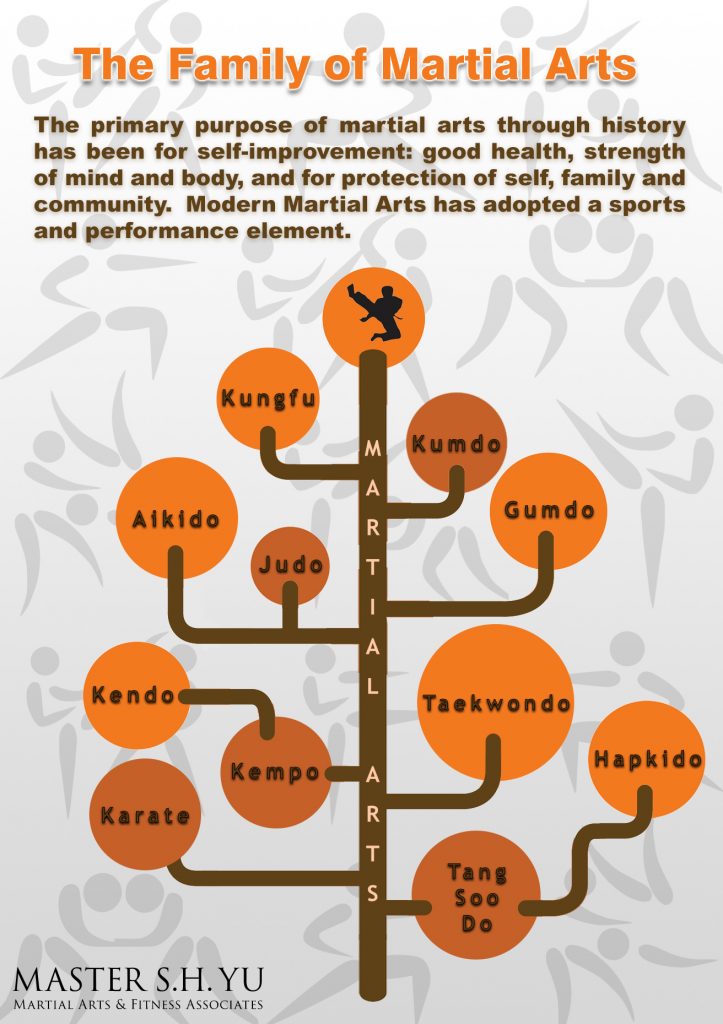Unveiling The Selection Of Martial Arts Disciplines: An Overview From Martial Arts To Taekwondo
Unveiling The Selection Of Martial Arts Disciplines: An Overview From Martial Arts To Taekwondo
Blog Article
Article Composed By-Aldridge Haastrup
Are you tired of sensation overwhelmed by the large globe of fighting styles? With many designs to select from, it can be very easy to get shed in a sea of punches, kicks, and mysterious names. However fear not!
This conversation will debunk the various fighting styles designs, taking you on a trip from the effective strikes of Martial arts to the dynamic kicks of Taekwondo. Prepare to discover the origins, strategies, and viewpoints behind these ancient art kinds.
So, tighten your belt and prepare to start an informing exploration right into the exciting world of fighting styles.
Origins of Martial Arts Styles
The beginnings of martial arts styles can be traced back to ancient people and their demand for self-defense and combat techniques. Throughout history, various societies established their own unique techniques of combating, each with its very own set of methods and approaches.
In China, for example, fighting styles styles such as Kung Fu and Tai Chi were created as a way of protection and boosting physical and mental well-being.
In Japan, the samurai warriors created designs like Martial arts and Judo, concentrating on self-control, precision, and mastery of the body.
Similarly, in Korea, Taekwondo emerged as a martial art highlighting high kicks, fast activities, and mental fortitude.
These very early people laid the structure for the varied variety of fighting styles styles that exist today, each with its very own rich history and cultural significance.
Techniques and Educating Approaches
To master martial arts styles, professionals need to learn numerous strategies and training methods.
west coast martial arts are the specific activities and actions utilized in combat, such as strikes, kicks, tosses, and obstructs. Different fighting styles styles have their very own distinct collection of techniques that professionals must master with extensive training.
Educating techniques vary depending on the style, but they usually include a combination of physical fitness, drills, sparring, and types.
Physical fitness is vital to construct stamina, versatility, and endurance. Drills aid specialists fine-tune their strategies and enhance their speed and precision.
Competing enables professionals to exercise their strategies in a managed, realistic environment. https://martialartskids55543.blogadvize.com/41309219/conversation-with-a-martial-arts-specialist-wisdom-and-motivation , likewise known as kata, are cut-and-dried sequences of motions that aid experts develop muscular tissue memory and emphasis.
Approaches and Principles
Discovering the philosophies and principles of martial arts styles can give you with a deeper understanding of your chosen technique. Each fighting style has its very own distinct philosophy and set of assisting principles that shape the means it's practiced.
For instance, Martial arts stresses discipline, respect, and self-control. martial arts classes adults near me educates professionals to focus their minds and bodies, enabling them to protect themselves while keeping a feeling of inner peace.
On the other hand, Taekwondo puts a solid emphasis on speed, agility, and flexibility. https://www.bloomberg.com/news/articles/2023-05-24/celtics-co-owner-pagliuca-tries-mma-as-investor-interest-grows are rooted in the tenets of courtesy, integrity, determination, self-discipline, and indomitable spirit.
Final thought
Since you have actually discovered the origins, strategies, and philosophies of various martial arts designs, you have a much deeper understanding of these ancient techniques.
Think of a young karate pupil, experimenting steadfast resolution and focus, breaking through boards with a powerful strike.
Their journey showcases the dedication and stamina required to understand a martial art, reminding us that with technique and perseverance, anything is feasible.
